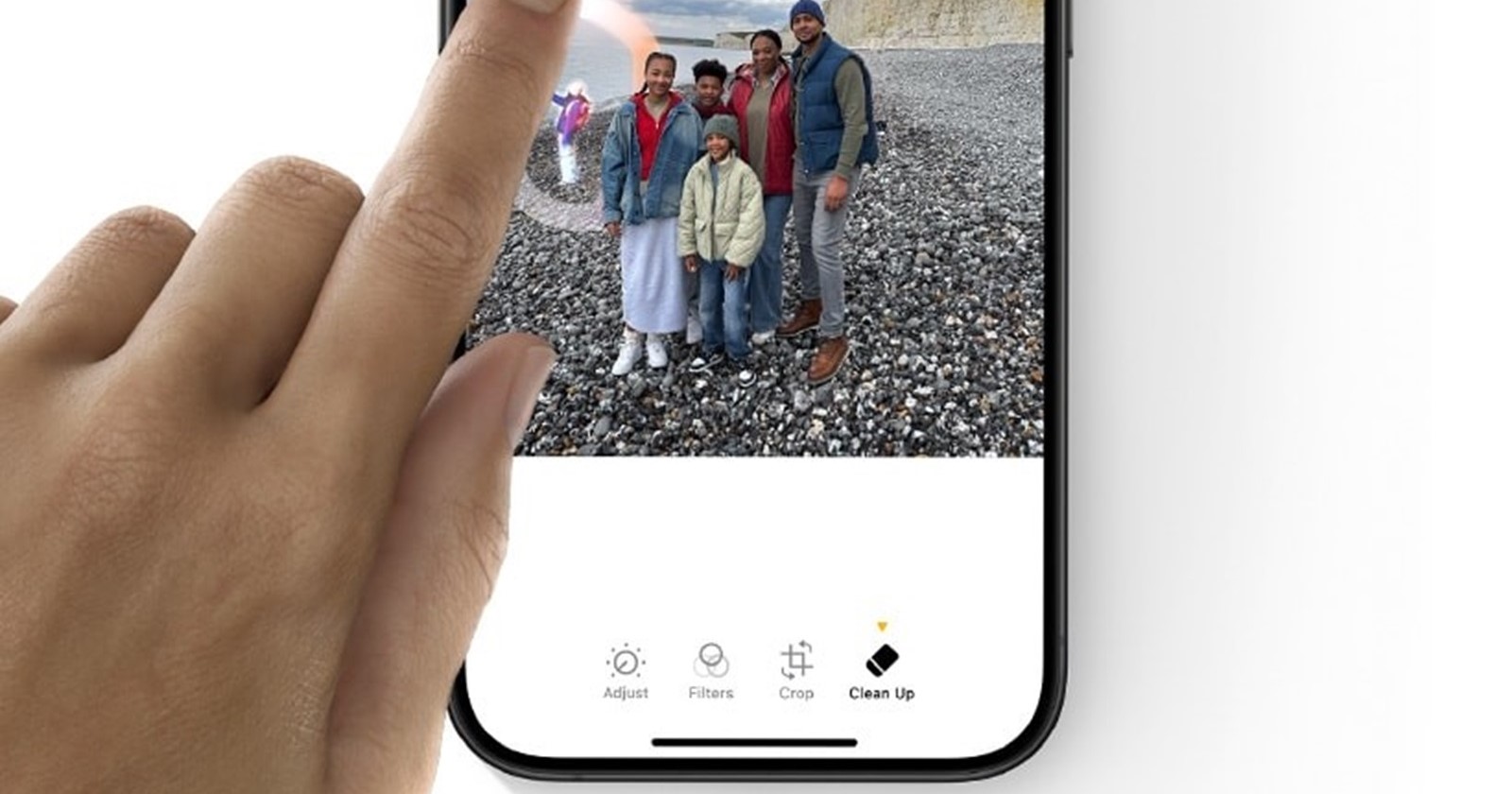Apple’s freshly baked Clean Up tool, introduced in the latest iOS 18.1 beta, is the company’s latest venture into the realm of artificial intelligence-powered photo editing. Think of it as Apple’s take on Google’s Magic Eraser, but with some distinctly Apple-flavored twists. The tool promises to tidy up your photos by removing unwanted objects, but before you get too excited, let’s take a closer look at what this feature can — and more importantly, can’t — do.
What Apple Clean Up does (and doesn’t) remove
When you tap into a photo on your iPhone, the new Clean Up tool is just a tap away, denoted by a handy eraser icon. If there’s something obvious that can be whisked away — like a stray cup or a random photobomber — the tool does the heavy lifting and highlights it automatically. A simple tap, and poof, it’s gone! But here’s the catch: this magic doesn’t always work so seamlessly.
For starters, if the AI doesn’t automatically recognize the unwanted object, you’re left to your own devices. You can manually scribble on the object you want to remove, but the results can be… well, let’s just say it’s not quite the picture-perfect experience you might hope for. User feedback has shown that Clean Up struggles with larger objects or those in busy backgrounds. Trying to erase a person from a crowded scene? Good luck! The tool often ends up making the photo look more like an abstract painting gone wrong than a neatly edited masterpiece.
Limited contextual understanding
Unlike more sophisticated tools found in professional software like Adobe Photoshop, Clean Up’s AI lacks deep contextual understanding. It doesn’t analyze the scene as a whole but relies heavily on what’s immediately around the unwanted object to fill in the gaps. This limitation can lead to some odd results — imagine trying to fill in a shadowy background, only for the AI to smudge it into an unnatural blur. If you’re looking to Clean Up your vacation snaps, don’t expect miracles.
Not a one-size-fits-all solution
While Clean Up can be a nifty tool for quick edits, it’s not a catch-all solution. Its performance is best when dealing with small, isolated objects against a simple background. So, if you’re trying to erase that single leaf on the grass or a lone sneaker on a sandy beach, Clean Up has your back. However, if your aim is to remove an ex from a group photo or to clean up a cluttered background, you might find yourself wishing for more advanced options.
Furthermore, Clean Up can’t be used on Live Photos or videos. When you apply it to a Live Photo, it disables the feature entirely. You can turn Live Photos back on, but this will undo the Clean Up edit. This limitation might make you pause if you’re a fan of Apple’s dynamic photo format. And as far as modifying appearances or adding new elements to photos? That’s beyond Clean Up’s current capabilities. It’s strictly a removal tool — no adding your friend who missed the party or enhancing the sky to make it more Instagram-worthy. Google, on the other hand, has Add Me which does this perfectly well.
Region restrictions and language barriers
At the moment, Clean Up is only available in English (US) and only for iPhone 15 users running iOS 18.1 beta 3 and Mac users on MacOS 15.1 beta 3. If you’re outside these parameters, you’ll have to wait. Additionally, there’s no support for other languages and regions, which limits the feature’s global reach. Users in the European Union have been left out of this initial testing phase, a move that has sparked some criticism, especially given that similar features from competitors like Google and Samsung have been available in the EU for quite some time.
On-device processing and metadata transparency
One of Clean Up’s more subtle but significant features is its commitment to privacy. Unlike some of its cloud-reliant competitors, Clean Up and other Apple Intelligence features run directly on your device. This local processing approach ensures that your photos don’t leave your phone, which is a win for privacy but might be a reason why the tool’s capabilities are somewhat limited compared to those using cloud-based processing.
Additionally, Apple is transparent about edits made using Clean Up. A note is added to the photo’s metadata indicating that an AI edit has occurred, although finding this information requires a bit of digging. While this honesty is commendable, it raises the question of how many users will even know these labels exist.
Writer’s final thoughts:
Clean Up has the potential to be a handy tool for quick, simple edits on the go, but it’s far from perfect. Its limited contextual understanding and difficulty handling complex scenes mean it’s not quite ready to replace more robust editing tools. It’s still in beta, and Apple has time to refine and enhance its capabilities, so we might see significant improvements before its official release.
In its current state, Clean Up is like a well-meaning friend who’s great at pointing out the obvious but might miss the finer details. It’s a promising start, but if you’re hoping for a magic wand to fix all your photo woes, you might want to keep looking — or just embrace those imperfections.
TechIssuesToday primarily focuses on publishing 'breaking' or 'exclusive' tech news. This means, we are usually the first news website on the whole Internet to highlight the topics we cover daily. So far, our stories have been picked up by many mainstream technology publications like The Verge, Macrumors, Forbes, etc. To know more, head here.


